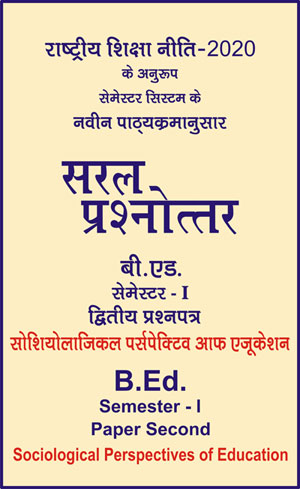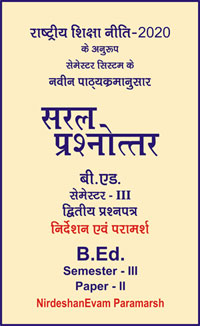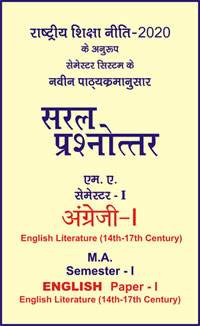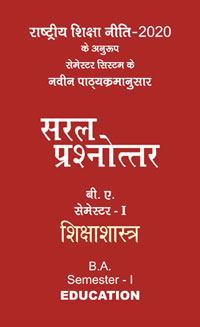|
बी एड - एम एड >> बी.एड. सेमेस्टर-1 प्रश्नपत्र-II - सोशियोलाजिकल पर्सपेक्टिव आफ एजूकेशन बी.एड. सेमेस्टर-1 प्रश्नपत्र-II - सोशियोलाजिकल पर्सपेक्टिव आफ एजूकेशनसरल प्रश्नोत्तर समूह
|
|
|||||||
बी.एड. सेमेस्टर-1 प्रश्नपत्र-II - सोशियोलाजिकल पर्सपेक्टिव आफ एजूकेशन (अंग्रेजी भाषा मे)
Question- Describe means and measures taken for equality of opportunities in terms of disabled.
Ans.
Education of Disabled
Identification of Disabled : Defects of speech, extreme physical delicacy and crippled body make learning disable children.
(1) Defects of the speech : It is noted that few children are afflicted by defects of speech, such as stumbling over words, mispronunciation, etc. Many of these defects can be got rid of through the simple expedient of regular practice. Demosthenes, a famous speaker of Greece, stuttered from birth. Children who falter and stutter are usually teased and laughed at by other children with the result that their social adjustment is considerably hindered. The child himself develops many undesirable attitudes. Presence of such defects make it imperative that the advice of a good physician be sought in order to remove them. Defects of speech can be more easily corrected in childhood than at a later stage. Yet, it is not quite right to plunge the child into complexities very early, at it may hurt his/her emotions Hence, teachers and parents should take care to pronounce words correctly.
(2) Extreme delicacy of the body : Another defect of the body is its extreme delicacy or weakness. A weak child finds social adjustment difficult since other children take advantage of his incapacity and bother him. General weakness of the child’s body can normally be alleviated through proper food and exercise.
(3) Crippled body : Some children become crippled either through some accident or even in pregnancy. Some children experience difficulty in social adjustment and adaptation since other children are prone to make fun to the cripple. Some parents develop a habit of mentioning the child’s crippled condition in front of him, and showing their disgust at it. This has the worst possible effect upon the child’s mind. In fact, Children of this kind should be treated with more love and care than normal children, though it should be remembered that he should not be reduced to complete helplessness and dependence where he can do nothing on his own, but needs the assistance of his parents.
In order to preserve the children from normal defects, teachers should train them to walk, sit, read, write etc. in the correct manner. Many physical defects can result if the child forms a habit of walking crookedly, sitting in a doubled up position, or reading in a reclined position. Furniture in the classroom should be comfortable and well-designed. Students to should be pointed out defects and faults in their posture, their manner of reading, the angle of light, etc. Girls who do not know the way of carrying themselves gracefully, unwittingly deprive themselves of much of their natural charm and poise. The truth of the matter is that the right sort of carriage hides many defects while if brings into prominence all the good qualities of the individual.
Integrated Education : The scheme of Integrated Education for Disabled Children (IEDC) was started with the objects of providing educational opportunities to children with disabilities under the general school system so as to facilitate their inclusion. Under the scheme, hundred per cent financial aid is provided to the states together with NGOS assistance.
The IEDC scheme has till recently remained a fringe scheme. However, in the wake of the promulgation of the persons with disabilities (equal opportunities, protection of right and full participation) Act, 1995, education of children with disabilities has occupied the centre stage.
|
|||||

 i
i 










